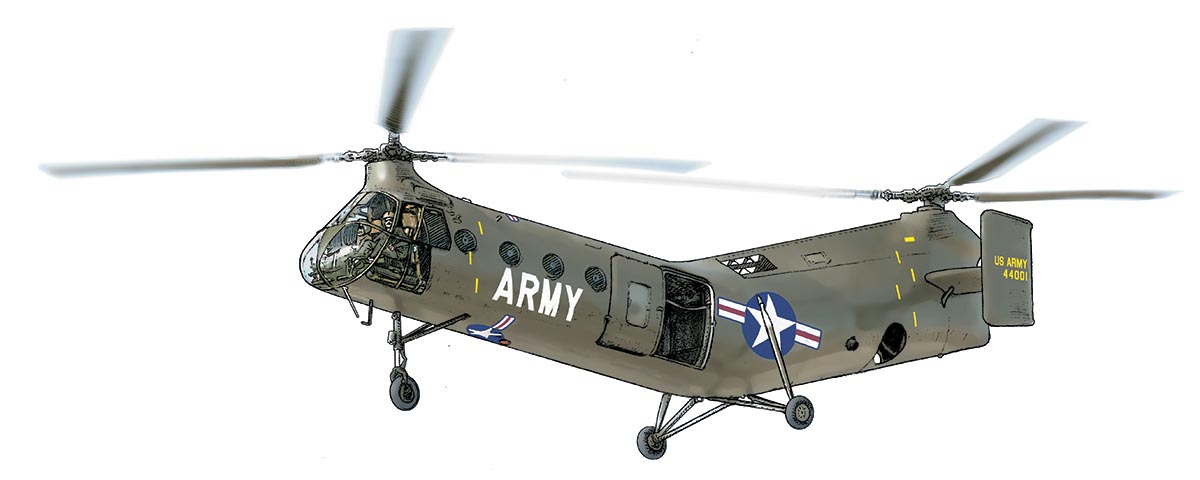In 1952, the U.S. Air Force ordered 32 Piasecki H-21A Workhorse search and rescue (SAR) helicopters. These were essentially improvements on a late World War II–era U.S. Navy design, the HRP-1 Rescuer, which was the U.S. military’s first tandem-rotor helicopter. Nicknamed the “Flying Banana” because of its upcurved fuselage shape, the H-21 was optimized for Arctic operations, but its comparatively powerful engines made it suitable for operations anywhere in the world. The Air Force quickly upgraded its H-21As to Bs by installing more powerful engines. The Army purchased that variant as the H-21C (later CH-21C) Shawnee troop transport, first deployed to Vietnam in December 1961. Its first combat service was with the U.S. Army’s 8th and 57th Transportation companies, carrying Army of the Republic of Vietnam (ARVN) troops.
Vietnam quickly exposed its vulnerabilities. The first Shawnee was shot down near the Laotian border in July 1962. Both the SAR and troop transport versions were unarmored, and although the helicopter’s engine proved resistant to fragments and small-arms fire, its control cables and fuel lines were easily damaged.
The Army armed its Shawnees with either 7.62mm or .50-caliber door-mounted machine guns, and experimented with a gunship version fitted with a forward-firing .50-caliber machine gun in a remote-controlled turret under the nose. But its slow speed and lack of armor limited its utility in that role. More important, the introduction of more powerful gas-turbine engines rendered piston-engine helicopters obsolete. The Bell UH-1 Huey began to replace the CH-21 in 1964, reducing it to the logistics role until replaced by the CH-47 Chinook beginning in 1965. The last of the U.S. Army CH-21s and Air Force HH-21s were withdrawn by that December.
The Air Force’s SH-21s became HH-21s in July 1962. Replaced by the Kaman HH-42 in the SAR role, they were withdrawn before the air war started over North Vietnam and probably would have suffered heavily over that country’s airspace. Nonetheless, the Flying Banana gave valuable service during its three years in the Indochina Theater. It was the primary tactical lift workhorse in the war’s early years. It also set many helicopter flying records in the 1950s, including the distinction of being the first to fly across the United States nonstop and the first to be refueled in the air—a capability that was not included in production models but has featured prominently in every U.S. combat SAR helicopter produced since 1967.
Crew: 3-5
Fuselage length: 52 ft. 7 in.
Rotor diameter: 44 ft.
Engines: Wright R-1820 Cyclone 1,425 shp 9-cylinder radial
Max. Speed: 127 mph
Max range: (empty) 426 miles
Max. payload: 22 troops (4,400 lbs.)
Armament: 1-2x 7.62mm or .50-caliber machine guns





